Rediscovering the Playdate
By amlabella 4 Comments
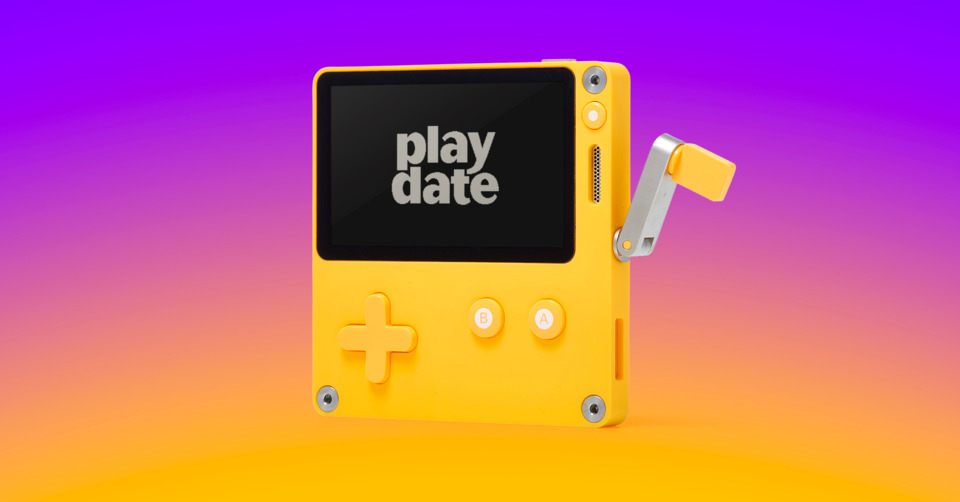
I have a problem: I haven’t been able to put my Playdate down for the last few weeks. It’s a good problem to have. The Playdate isn’t a new purchase; I pre-ordered one and received it back in 2022. I can’t resist the latest gadgets and I’m a sucker for new methods of control in games. A charming small portable in an eye-catching yellow with a crank: yes please! It looked neat and that’s exactly what it was. I mean, I was turning that crank and playing the latest game from the creator of Katamari Damacy (that I still need to beat – the later levels in Crankin’s Time Travel Adventure are tough). I played a few more games from the season one releases. And then I just… stopped. Other games sidetracked me. I lamented the lack of a backlit screen. Ultimately I tucked it away in my office, merely glancing at it on occasion thinking, “oh yeah, I have a Playdate; I should boot that up again soon.”
Cue March 2024. So not quite “soon.” The release of Mars After Midnight finally pushed me to plug in the charger, connect it to my computer, and brush off the dust. I’m a big Lucas Pope fan – Papers Please and Return of the Obra Dinn are two of my favorites from the last several years. Mars After Midnight is also great (more on that later). But the Playdate is more than a Mars After Midnight machine; so much more.
I continued to play more games and rediscovered a truly wonderful device. One that features countless creative ideas from passionate developers, a kind and welcoming community, and streamlined game dev tools so beginner-friendly that someone like me – a person with zero programming or design experience – managed to make a game. I may be late, but I’m finally rediscovering the brilliance of the Playdate.
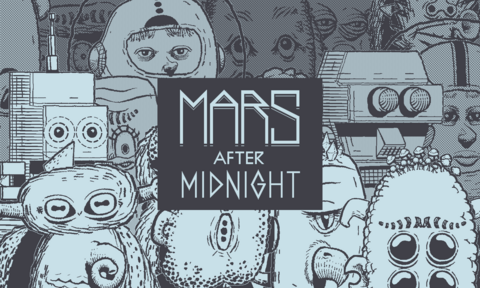
The Games
The Playdate launched with a very novel idea: a “season” of weekly releases to encourage players to try 24 games over the course of 12 weeks. There are many gems in that batch – Bennet Foddy’s Zipper takes his trademark challenge and translates it to a grid-based samurai puzzler; Saturday Edition cleverly adapts the point-and-click adventure genre to a sidescrolling format; and Ratcheteer takes the 2D Zelda formula and adds its own fun twists with a crank-controlled wrench and an illumination mechanic. But without frequent seasons, it becomes a bit more difficult to dive into the many creative games being released on this charming bite-sized console. There are plenty of cool projects on itch.io, but Playdate needed something more visible and easily accessible as well – enter the Playdate Catalog.
Much of my in-game time over the past few weeks has been with Catalog releases. I’ve purchased and played nearly 20 games from the Catalog and had some kind of fun with every single one. I can’t imagine any other storefront having that kind of success rate. It really speaks to the advantage of a highly-curated storefront.
There are so many genre types, art styles, and unique premises represented in the Catalog too. There are crank-based puzzlers, tough-as-nails shmups, and pocket-sized city builders just to name a few. Best of all, these games feel like real passion projects. Most of the teams making them are very small, and occasionally single individuals. Just recently there was a lovely Eurogamer article about how 57-year old Chris Mandra made his first game: Direct Drive. As he says in the interview, “It’s almost like a renaissance in gaming, I think, for indies and people who just want to do cool stuff.”
Well I’ve been reaping the benefits of all that cool stuff, so here are 10 of my favorite games I’ve played to shine a little more spotlight on some particularly impressive projects (presented in alphabetical order):
- A Balanced Brew: I beat A Balanced Brew on the “easy” difficulty and it was still quite challenging. But this might be the most satisfying game on the Playdate when it comes to mastering crank controls. It takes a while to get used to balancing on the unicycle, but I saw myself improving every day. Add in some charming comics and even a daily challenge mode and you have perhaps my favorite game on the Playdate.
- Bloom: The Playdate has its Animal Crossing-esque “check back every day” experience. The gardening mechanic is very simple, but the heart of Bloom lies in its text conversations. The relationship between protagonist Midori and her girlfriend and family feels so genuine and realistic. I was taken aback by the authenticity of those text conversations, and it culminates in a very touching conclusion.
- Factory Farming: I’m astonished at how well Factory Farming encapsulates the automated building genre on a portable console. I’ve tried games like Factorio and Satisfactory and certainly see the appeal, but something smaller like Factory Farming in which resources don’t deplete honestly might be more palatable to my interests. It provides a satisfying gameplay loop that is easy to play in short bursts or in longer sessions.
- Gravity Express: Gravity Express is another game that highlights the brilliance of the crank. Aiming your ship with it feels sublime, and the level design provides plenty of nerve-wracking challenges. I loved the balance of resource management with the fuel and spatial navigation with locked doors and single-direction routes. The achievement system also provides an excellent incentive to replay levels and improve over time.
- Gun Trails: I’m bad at Gun Trails. I’m bad at most shmups and yet I keep exploring the genre. Many of them feature standout visuals and soundtracks, and Gun Trails is no exception. It looks absolutely incredible considering the technical capabilities of the Playdate. And though I’ve died quickly many times, its simple scoring and chain mechanics encourage me to dive back in and try again.
- Mars After Midnight: Lucas Pope’s latest game follows in the footsteps of Papers Please more so than Return of the Obra Dinn. But instead of verifying immigration documents for a fictional country, Mars After Midnight tasks you with admitting aliens into late-night wellness meetings based on things like their number of eyes or their ability to dodge unexpected punches. It’s silly, fun, and its levity makes for a perfect fit on the Playdate.
- Reel-istic Fishing: I can see why this won the Playdate Community GOTY. Reel-istic Fishing provides a satisfying loop of fishing, harpooning, and going to the shop to buy new equipment. Aiming the harpoon with the crank is very fun. Also, the economy is fine tuned – each new money milestone is appropriate, and the upgrades feel substantial in a way the truly rewards those hard-earned fishing dollars. Though I “beat” the game, I still have a strong desire to go back and fill out the compendium.
- Resonant Tale: Resonant Tale certainly wears its 2D Zelda influence on its sleeve (with plenty of nods to Link’s Awakening in particular), but it’s also incredibly well crafted. The puzzle design is strong – not too easy or challenging – the world feels large and sprawling despite the limitations, and the secrets and chests provide a fun incentive to poke around the map. The secrets in particular remind me of Tunic (on a much smaller and simpler scale), one of my favorite games of the last few years. The fact that it was made in Pulp is mind-boggling; this is the game that actually inspired me to mess around with Pulp and start my own creations.
- Root Bear: Root Bear is an all crank, no frills experience. Pour up to the line, go for a high score, and repeat every 60 seconds. There’s strength in that simplicity. The crank controls feel fantastic and provide ample opportunities for improvement. It’s also a great pick-up-and-play experience that everyone can try. My wife and I were having fun going back and forth for the high score (I’m currently in the lead with 90, but she’s not far behind!).
- Under the Castle: Under the Castle emphasizes how well a traditional turn-based roguelite can work on the Playdate. Each level is condensed and digestible. There are a good number of weapons, spells, and items to discover without feeling overwhelming. And its art direction has so much style, personality, and color (figuratively of course). Upon beating the game I immediately played more in an effort to discover every single item in the game, and I have no intention of stopping after that.
Honorable Mentions: CodeWordPlay, Direct Drive, A Joke That’s Worth $0.99, The Keyper, P-Racing, Pullfrog Playdate Deluxe, Rendsword
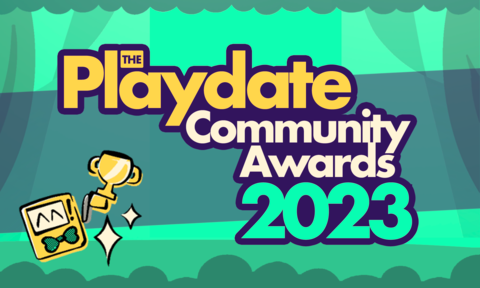
The Community
Just as impressive as the Playdate Catalog is the Playdate community. I recently joined the fan-run Playdate Squad Discord server, and in my short time there I’ve encountered many kind and welcoming individuals. They also have a subreddit with plenty of discussion about the handheld and its games, and even a new YouTube channel that hosted the 2023 Playdate Community Awards (I discovered many fantastic games thanks to that video). The Playdate is certainly more of a niche console than most out there, but it’s wonderful to see such a vibrant community supporting it.
I’m particularly impressed with how the Discord server bridges the gap between creators and fans. The aforementioned Chris Mandra was in the “show and tell” channel proudly sharing the Eurogamer interview. The dev behind The Keyper responded to me when I mentioned I was stuck on a screen near the end of the game. The dev behind Resonant Tale, one of my absolute favorite Playdate games, even gave me some feedback on my little game I was working on. To take it back to Mandra’s quote from the Eurogamer interview one more time, it reinforces that Playdate creators are simply “people who just want to do cool stuff.”
The community continually emphasizes the development side of the game industry. In the Discord server, there are a variety of channels dedicated to game development, whether it be through the web-based game editor Pulp, the Playdate SDK, or the programming language Swift. Some of those channels go beyond me, but I have been spending some time in the Pulp channel because, well, I made a game!
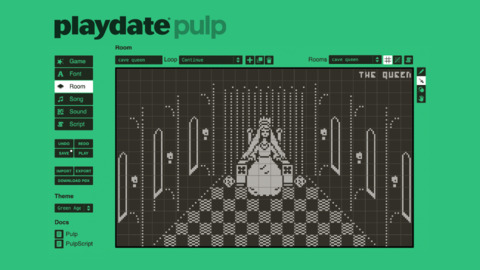
Pulp
“I made a game” has a certain connotation to it. Inherently it sounds impressive. So I do want to exercise some humility here and say my game probably isn’t very good despite taking several hours to make. It’s quite short, has too many static screens with not a lot going on, and contains a screen transition error that I need to go back and fix. But I made it. I put in the work. I learned some basic coding, designed a few sprites, added frames for animation, etc. I’m really proud of myself for pulling it off. I have absolutely zero experience coding, designing a game, or working on any kind of creative endeavor related to game development. It was overwhelming and intimidating at times, but Pulp helped make it a reality.
The fact that there’s a web-based game editor for Playdate that is so beginner-friendly on top of everything else the console does right is impressive. Pulp includes some rudimentary tools built-in so you don’t have to dive into coding/scripting at all. You can make a player, have them pick up items, and have those items (or sprites) trigger a text box upon interaction. But to do anything beyond that, it’s important to learn PulpScript, the scripting language that allows for more complex interactivity. That was definitely a hurdle for me to overcome (and something I’m still working on). As the tutorial page states, “the syntax is terse but powerful.” But boy is it satisfying to learn and implement. The first time I triggered a specific interaction that required a set number of items (ex: the computer terminal can only be used after acquiring five keys), I had a big smile on my face. What would be a very simple interaction for someone else felt Herculean to me, and it made the result all the more rewarding.
Though I figured out a lot about Pulp on my own with the help of the PulpScript tutorial page, members of the Playdate Squad Discord server were also very, very helpful when I asked questions in the Pulp channel. Once again, the community is a real standout.
(If there’s any interest in trying my Playdate game, it can be downloaded HERE. It’s called Astral Expedition and I’m always happy to receive constructive feedback).
So that’s been my journey rediscovering the Playdate over the last few weeks. It’s certainly not the end though. I plan to keep checking out new releases, popping into the Discord server on occasion, and even playing around with game development on Pulp when I have the time. Kudos to Panic for making such a wonderful device and fostering a supportive community!

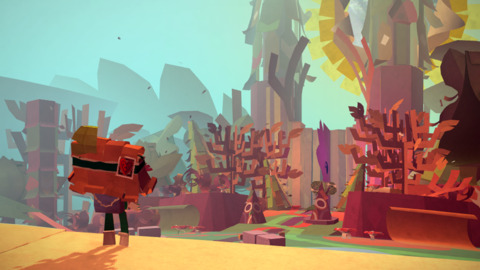
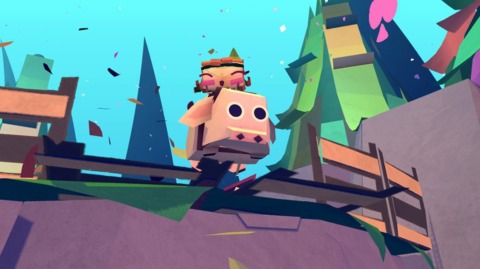
Log in to comment